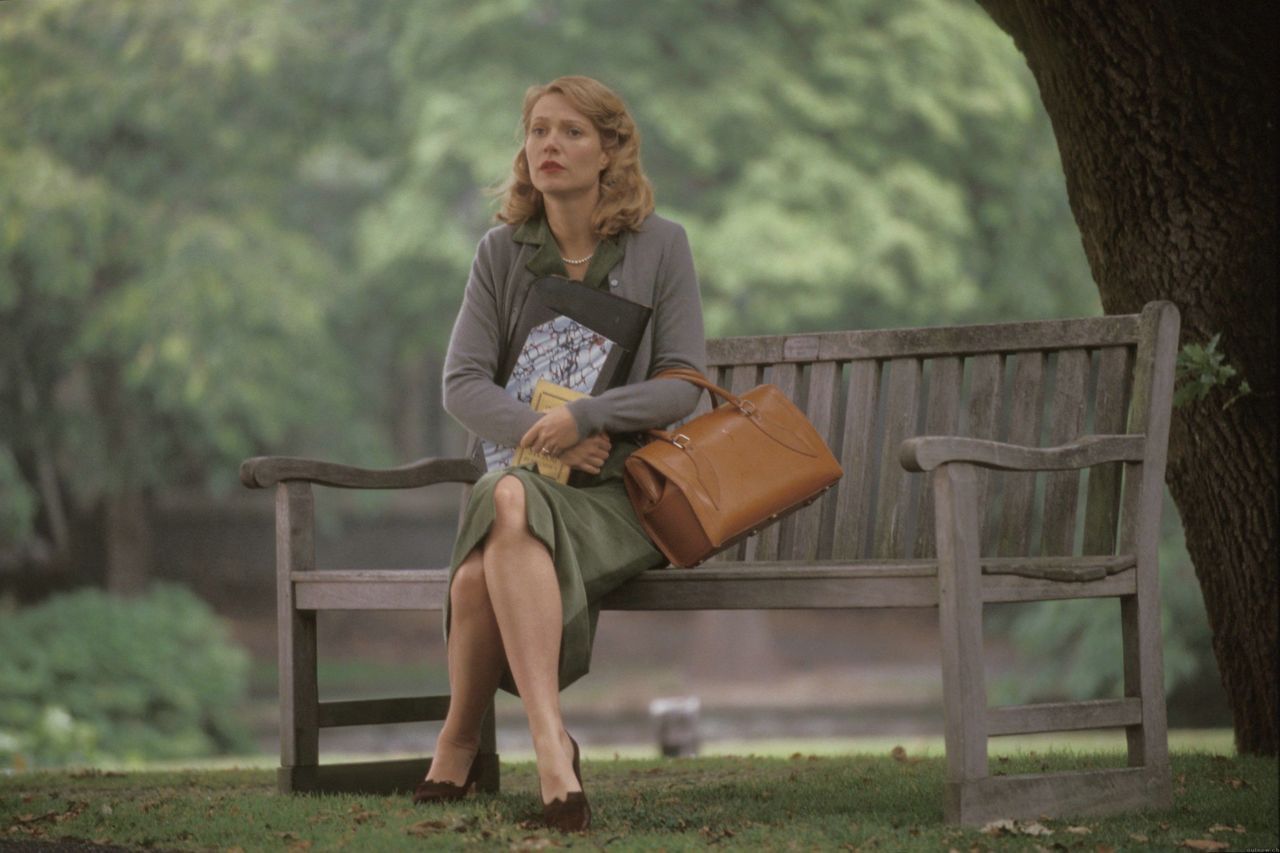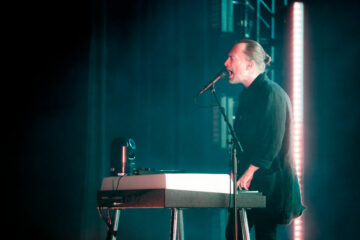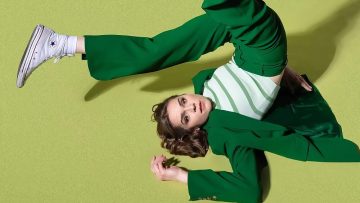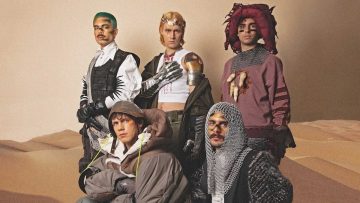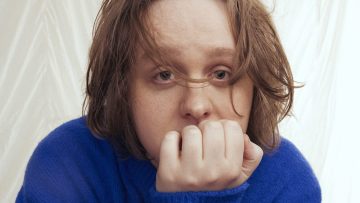★★☆☆☆
A few years ago, I was at a Christmas poetry event. Amid a predominantly male line-up, a woman got up on stage wearing a sparkly mini-dress that caught the light like a sapphire. She was a serious poet, performance artist and academic – but that didn’t stop a man in the audience from loudly proclaiming at the end: ‘I didn’t hear a word she said – all I could concentrate on was that dress’.
Society has a habit of scrutinising the clothes women wear in public – and sometimes women have a habit of playing to that scrutiny (the sparkly dress was meant to be eye-catching). Both acts (observing and being observed) are rooted in a long history of the male gaze, which has tended to treat women as objects of aesthetic contemplation. And while men can be looked at too, they also have, throughout history, been listened to. As the art historian John Berger puts it: ‘men act, women appear.’
Poets in Vogue (17th Feb – 25th June 2023), a new exhibition at the National Poetry Library, looks at the ‘fashion worlds’ of seven women poets through a series of displays, including Sylvia Plath’s plaid skirt, Stevie Smith’s starched collars, and a recreation of Anne Sexton’s slinky red dress. Yet rather than raise issues around the objectification of these female poets as they entered public space, the exhibition offers a largely uncritical celebration of sartorial choice.
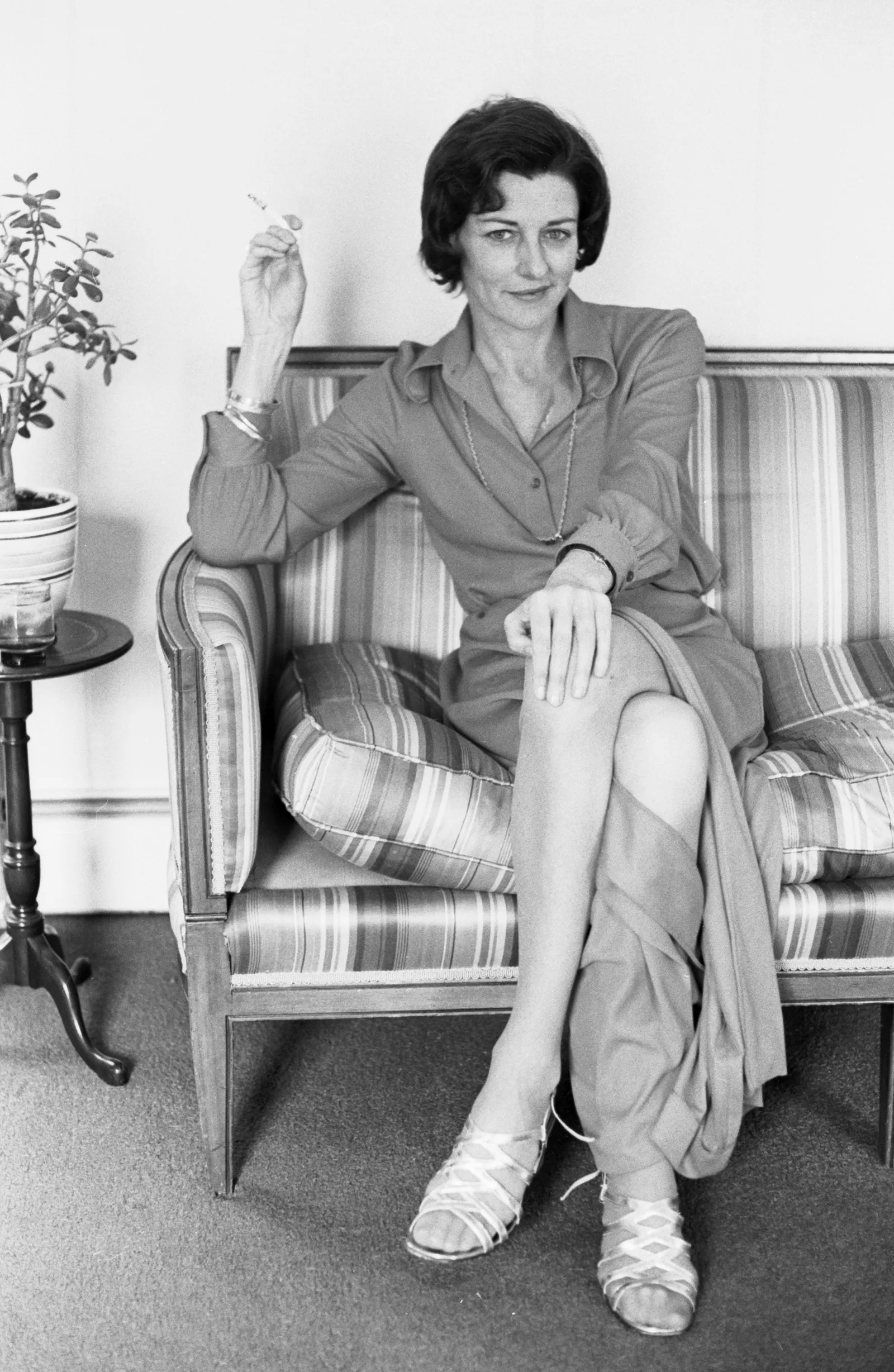
Anne Sexton is one of several poets whose work – and style – is central to the exhibition.
Sarah Parker, one of the curators of Poets in Vogue, told The Guardian: ‘I had always been slightly seduced by looking at photographs of female poets, and felt guilty about being interested in what they wore’. Why? Because in doing so, Parker is implicitly looking at these women through the same eyes that history always has: not at their words but at their appearance.
READ MORE: Academia and Cottagecore: When Did Academics and Farmers Become Fashionable?
There’s nothing wrong, of course, with interest in fashion – for women or men. Look at Lord Byron’s extravagant cravats, capes, turbans, or Baudelaire’s dandyish velvet collars and silk bows. In fact, Baudelaire’s outfits were so outrageously brilliant as to have inspired a lyrical novel by the contemporary poet Lisa Robertson, whose writing repeatedly revels in the tactility of textile production – and whose own exquisite wardrobe could be the subject of an exhibition on its own.
So where are the men in Poets in Vogue? To some extent, of course, the curators are doing the right thing by giving these women their own platform, away from their better-known and often more celebrated male contemporaries.
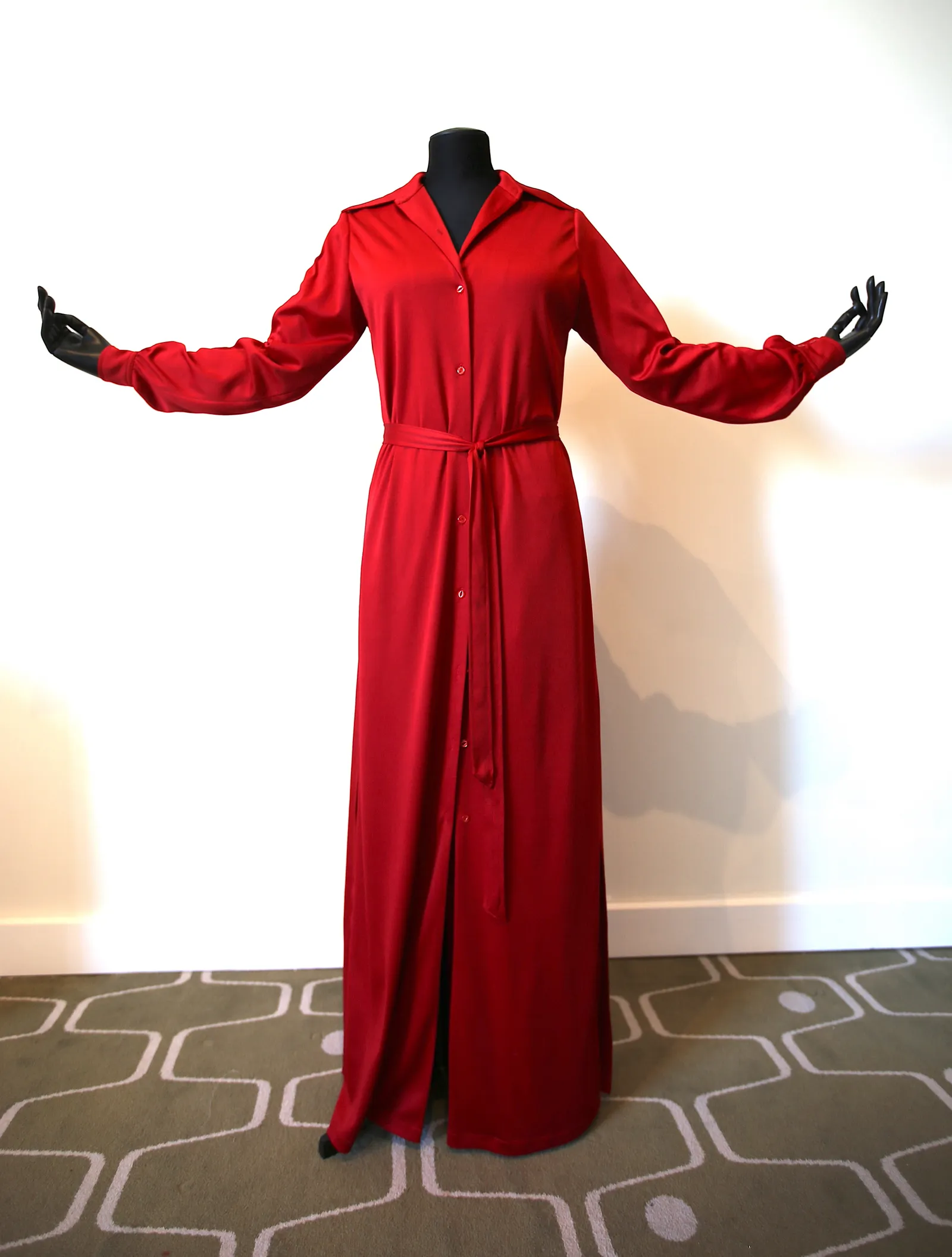
A recreation of Sexton’s red dress.
But should we really keep the conversation so one-sided regarding appearance? Shouldn’t we address the fact that, while women dressed to impress (Sexton’s floor-length crimson number is almost red-carpet worthy), nobody cared that W. H. Auden’s face looked ‘like a wedding cake left out in the rain’ (his words) or that Dylan Thomas had holes in his jumpers? Or are we afraid that it might be read as reductive to hang Ted Hughes’s empty trousers and Phillip Larkin’s nebulous shirts on display?
On the other hand, it is important to draw attention to the women who have used clothes to make subversive or radical statements, and the inclusion of Theresa Hak Kyung Cha’s image Aveugle Voix (1975) – which shows the American-South Korean poet with a white stencilled cloth wrapped around her face – does begin to address this. The outfit itself, however, is not on display (just a veil to ‘express’ her life and work), and the photograph remains something of a footnote to Plath and Sexton’s more tactile skirts and dresses.
Regardless of history’s Byrons and Baudelaires, society is much more likely to judge a woman by her outfit and treat women’s clothes as a proxy for her person. Just look at John W. Mills’s Women of World War II monument on Whitehall: no bodies, only empty munitions factory clothes hanging on pegs. (For comparison, look over the road at the Field Marshal Earl Haig Memorial, a virile, life-size likeness of Haig on horseback).
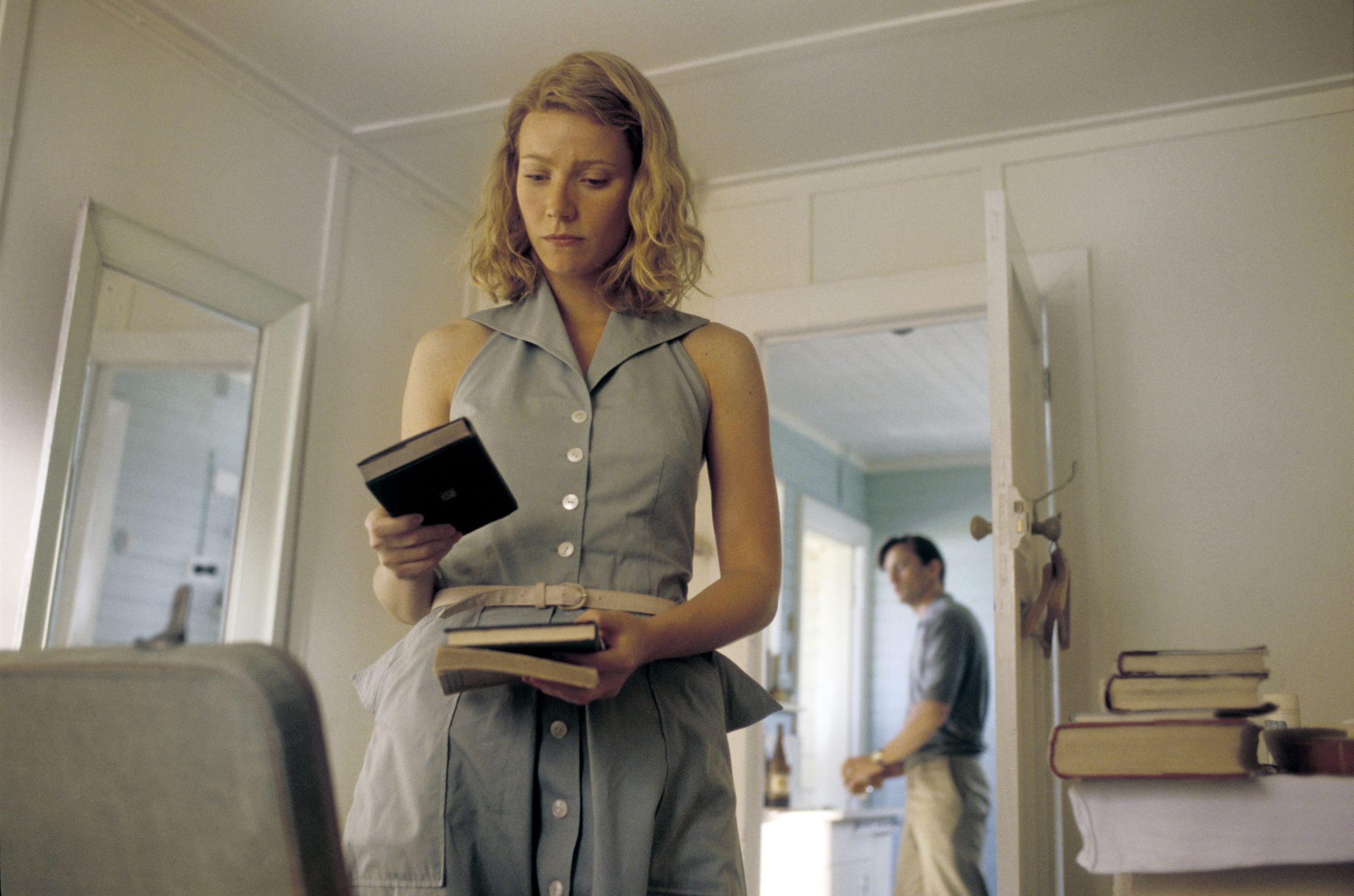
Gwyneth Paltrow as Sylvia Plath in the 2003 biopic Sylvia
Was Mills trying to represent the fate of so many women who, after the war, had to hang up their liberating overalls and boots and get back into constricting dresses and high heels? If he wasn’t, then the memorial is a potent reminder that women’s clothes are never neutral: burning bras or wonder bras, there’s always a social subtext to how women dress.
So here’s the question: if women poets still tend to work in the shadows of their male counterparts – if the audience still insists on looking rather than listening – should we really focus on the clothes they wear? Are empty outfits hanging on headless mannequins and bodiless stands really an empowering celebration of these trailblazing women of letters?
Suppose women’s clothes have been sexy, daring, or eccentric. In that case, that’s probably because they were (and often still are) aware of the public’s ever-watchful eye: now, more than ever, we need to pull focus away from how they appear and spend more time celebrating the ways that they act and think – and write.
Poets in Vogue is free to attend at the National Poetry Library from 17th February until 25th June 2023

